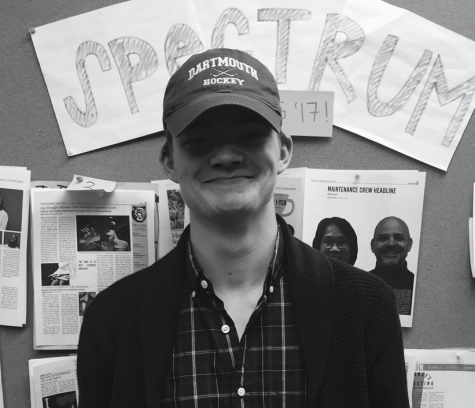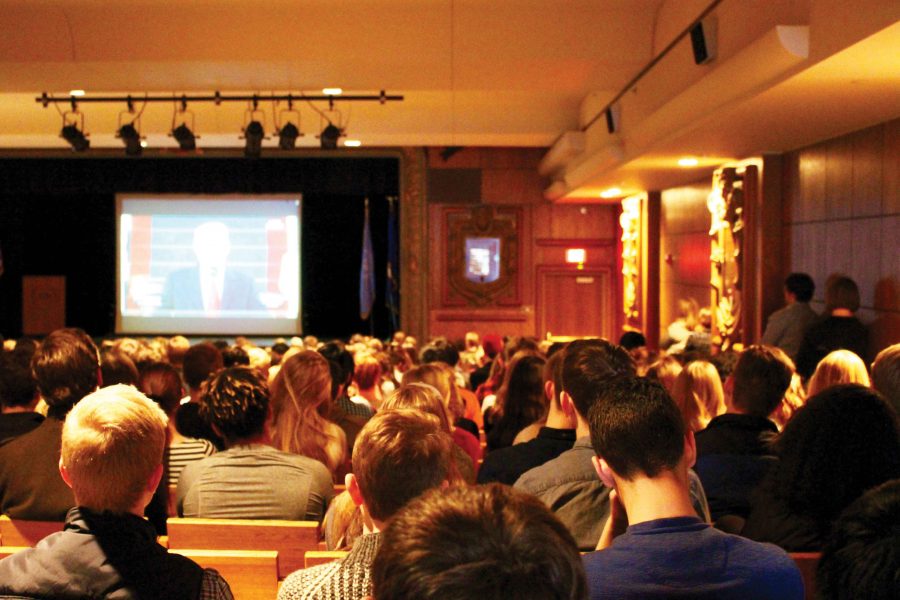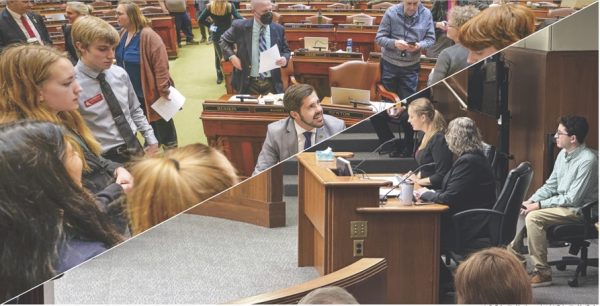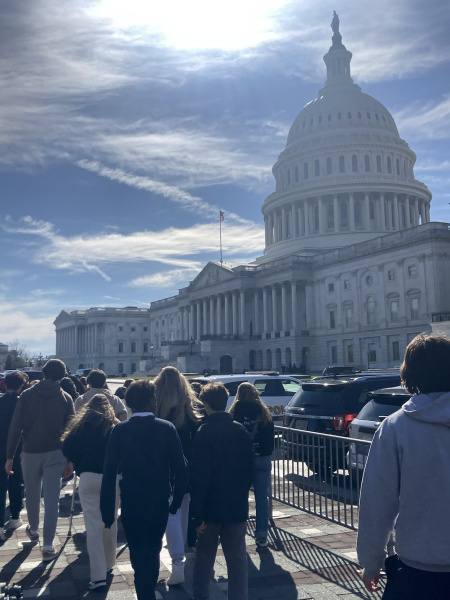Inauguration prompts processing
Students watch the inauguration of Donald Trump live in the Julliet Nelson Auditorium while some students chose to leave and accept the consequences. The students who peacefully protested left after the new president was sworn in.
The polarization of the 2016 presidential election was almost indisputable and is still being carried into today’s political climate.
Despite the divide, the Upper School held a school wide viewing of the Presidential Inauguration in the Juliet Nelson Auditorium in effort to educate and inform our faculty and students with formal or informal discussions to follow.
The viewing was clearly framed by the administration as not to convey support for Trump but rather as a time to be informed about our country. Joe Ruggiero prefaced it in his speech that he presented the day before the Inauguration saying, “We are an educational institution; we are one of the best educational institutions in the country, precisely because we are committed to providing challenging and enriching learning experiences for our students. Growth doesn’t happen when you’re comfortable. This is why, at Blake, we have chosen not to ignore or avoid or shut down. . . but to engage, to listen and to lean IN” (sic).
This very engagement that Ruggiero references was carried out after Trump’s speech and into our community through discussion and art.
Students were given the opportunity to partake in discussions varying from historical allusions and economic implications referenced in Trump’s speech with David Zalk, to simple conversations with peers and faculty in the lounges.
If some were not interested in conversing, they had the opportunity to congregate in the mini-gallery in the arts hallway, where Bill Colburn, Drawing and Painting II students, and other volunteers created a place for each student, teacher, and employee to finish the sentence, “Today, I am…” with art or words on a uniform square of their own.
If we had made the decision to not view the inauguration or made it optional, it certainly would have been less controversial. It definitely would have made the lives of the faculty and administration a heck of a lot easier. It also would have been the easy way out.
— Joe Ruggiero
Savannah Swanson ‘17 who helped make the wall says it was a way “to use art to put down your feelings or beliefs. . . in a respectful way.’
Some students, though, chose to exercise their right to walk out of the viewing of the Inauguration. Several days before the all-school viewing of the Inauguration, five students gathered to write a letter to the administration (the full version can be found at blakespectrum.org).
The students write, “We are walking out to show that those of us who are affected by this bigotry and those of us who stand together as allies refuse to tolerate these effects of Trump’s reprehensible actions.”
They go on to say, “We understand and appreciate Blake’s aim of using the inaugural speech as an educational opportunity. Rather than “rejecting” or disrespecting those who choose to stay. . . the Blake students walking out from assembly are demonstrating their political agency.”
To date, none of the consequences of nonattendance have been served, but the group asserted their acceptance of the consequences of walking out that were made clear in Ruggiero’s speech.
Sam Haj ‘18, a student who chose to walk out of the assembly, passionately specifies her reasoning for walking out: “I walked out because I am afraid. . . I didn’t leave to show animosity towards the Republican Party. I left because I am afraid of my own government, and that is the most un-American fear to have.”
Haj, along with about 20 other students showed their opposition to the Trump presidency by non-disruptively walking out of the JNA after Trump was sworn in.
Seeing the clash of beliefs within the Blake community regarding the viewing of the inaugural speech, Emma Owens ‘18 expresses that one of her reasons for boycotting the viewing was the tension surrounding others’ decisions to walk out. She says, “I think the stigma around [walking out] changed my mind and I knew that I had to do it.”
Owens also frames her concern for the future: “I walked out because I felt as if I needed to. Not personally, for myself, but for a lot of people who are a lot more unsafe than people at this school realize.” Owens walked out as a move of solidarity for others.
However, the majority of students chose to attend the assembly for varying reasons. Olivia Bizal ‘19 believes the experience was a valuable informative, rather than political experience: “I believe as a citizen you have to watch it and just be educated and I think as a school we’re doing it for educational purposes because we’re all citizens.”
Lucas Foster ‘18 stressed the importance of supporting “the system” and accepting the inevitable swearing in of the president-elect, whether in support or not. Foster summarizes, “I think it’s important to support what the American people chose regardless if you agree with his position or not…also he’s gonna be the person leading the country so I think it’s important.”
Viewing the inauguration as a historical event was the biggest priority for Abbie Nelson ‘18, who says, “ I can [say] to my kids, ‘I remember the day that I sat in assembly and watched Donald Trump.’”
The purpose of the day in its entirety was not to endorse President Trump and everything he stands for, but rather to experience a national event. It was the same type of day that occurred four years ago and a similar day that will occur four years from now. Emotions were running high but the community was able to come together despite differing opinions through discussion and art.
Ruggiero reflects on the whole day, saying, “I feel really proud of the student body. I feel like they handled it well.”

I have been writing on Spectrum since 9th grade. I joined the editorial staff my second semester of 10th grade and I edited Sports. First semester of 11th...

I am a first-time Student Life editor! I wrote for Spectrum throughout 1st semester, mostly for Student Life, but I have branched out this semester. I...

This is my third year writing for Spectrum, and my third semester working as an editor. (I've edited Opinions, Front, and now Sci-Tech!) I'm so excited...
















